In the summer of 1849, the Norwegian lawyer and literary critic Peter Jonas Collett visited the Danish poet Christian Winther in Copenhagen. The conversation turned to Norwegian literature, and Winther asked Collett if he knew who had written “the delightful little sketch” entitled “Kongsgaard”, which had been published two years earlier. “‘Oh yes, indeed I do, for that sketch was written by my wife!’” reported Collett in a letter to his wife. “‘Your wife! really! What a coincidence’ and so forth. I told him, meanwhile, that you were not authoress by profession, but it was purely for your own amusement that you once in a while wielded the pen,” he reassured her.
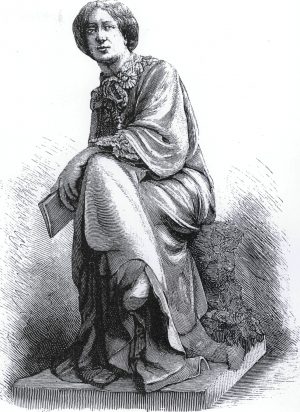
Five years later, in 1854, Camilla Collett (1813-1895) wrote to Christian Winther on her own account. She sent him a portion of the manuscript to her ambitious novel Amtmandens Døttre (1854-55; The District Governor’s Daughters) and asked him for his advice and comments. As was fitting for a lady with a sense of female propriety, she expresses doubts about her literary vocation and claims it was by sheer chance that she started writing. She is also protective of her now deceased husband’s reputation: certainly he encouraged her to write, but only as a pastime. Indeed, he actually took away any desire she had to embark on an extensive work by insisting that a Norwegian novel was, in itself, an impossibility given that the state of affairs in Norway was still too primitive for anything to be learned from it. It had not been her intention, but the story had meanwhile grown into something bigger, and by the time of Jonas Collett’s death the manuscript was “like something chaotic, shapeless, neither whole nor half, just pieces”. So now she has reshaped it all, tried to give it coherence, and what does Christian Winther think about the result? She would seem to be prepared to follow his advice, but she concludes her letter with a self-assured and robust caveat: the novel might indeed be defective, but “perhaps it can stand on one leg, just like Andersen’s steadfast one, which nonetheless became a famous tin soldier”.
With this image of the tin soldier, Camilla Collett breaks with the submissive role she has otherwise assumed in the letter. Not only is she bold to compare herself with so famous a writer as Hans Christian Andersen, the image says more than that: like a daughter of Eve, forged from Adam’s rib, she invokes the tin soldier who was cast last of all, when there was hardly any tin left. Although he only had one leg, he nonetheless stood steadily, and despite all his awful experiences he was able to sustain the greatest emotional experience of his life: his love for the little ballerina.
Throughout her adult life Camilla Collett nursed an unrequited love for the Norwegian writer Johan Sebastian Welhaven, and she stuck to her claim for respect of the emotions. In her opinion, love had to be the foundation on which a woman’s life was based. And, like the tin soldier, she was steadfast and unyielding; it was hardly any accident that she concluded her writing career by identifying with the “Kjerringa mot strømmen” (Woman against the Current) of folklore: stubborn, tenacious, unbending to the last.
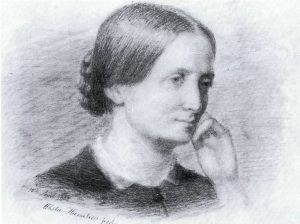
She does not attempt to conceal the tin soldier’s deficiency, the amputation as it were. But she turns it to his advantage: the very thing that is different might be of special interest. Hans Christian Andersen tells us that of all the tin soldiers in the box, this tin soldier, the odd one out with only one leg, was the most noteworthy. Perhaps Camilla Collett was of a similar mind: that as a woman writer, she was something special in comparison with all those more or less identical male writers. Amtmandens Døttre was no run-of-the-mill novel.
Nor was the novel seen as such when it was published in 1854-55. Many people, no doubt mostly women, were affected by the thematic line of the book: the attack on marriages of convenience and marriages contracted solely to provide for the woman, the complaints about the restricting parameters of life for women. “How we read, no, devoured that book! How we admired the fine depiction of character, the splendid use of language,” exclaimed the writer Elise Aubert when she later recorded her memoirs of life during the 1850s. And even the male critics, who argued that Camilla Collett took too bleak an outlook on the state of affairs and made women more “self-tormenting” than they actually were, delighted in the innovation of her style. Finally a book that is not written with “Rahbek’s and Borgen’s instructions in hand or head”, as the Norwegian critic Paul Botten-Hansen wrote of Amtmandens Døttre. And that is an accurate observation. For while most Danish and Norwegian male writers of the period had spent years at grammar school, where they had written their essays under the supervision of Knud Lyhne Rahbek’s Om den danske Stiil (On the Danish Style) or V. A. Borgen’s Veiledning til Affattelse af Udarbeidelser i Modersmaalet (Guidelines for the Writing of Compositions in the National Language), we here encounter a stylist who has fashioned her language with a woman’s pen. She had kept a diary and written letters for nearly twenty-five years, constantly seeking to find a language in which to express her thoughts and experiences – an agile and smooth language free of all “affectations”, but an also robust and vigorous language. “You see, one must only always write as if one was speaking, as if the person being addressed was standing there listening,” Camilla Collett wrote to her friend Emilie Diriks as early as 1837.
Her efforts in respect of language were by and large successful. Literary history has therefore passed an unambiguous verdict on Camilla Collett as stylist: uneven, indeed, but when she is at her best she is in a league of her own.
Apprenticeship
Amtmandens Døttre is the first realistic ‘propaganda novel’ in the annals of Norwegian literature, and the first Norwegian novel to take a broad and critical look at conditions offered to women in the better-off strata of society. It is a major novel, written by a gifted and exceptional woman.
Camilla Collett’s maiden name was Wergeland, a name with resonance in Norwegian history. She was the daughter of pastor and writer Nicolai Wergeland, known from his membership of the 1814 constitutional assembly at Eidsvoll, and she was sister of Norways’s great Romantic poet, Henrik Wergeland.
Her upbringing, and also the milieu of which she later became a part, primed her to approach life in a reflective and analytical manner. One reason can be found in the difference between her and her brother. He was brought up in accordance with the tenets laid down in Rousseau’s Émile,and he later threw himself with great vitality and energy into the roles of poet, patriot, champion of the people, and reveller. She, however, was meant to cultivate her beauty and talents in order to make a good match. This led to a contradictory self-image. On the one hand, she enjoyed the sensation she created when she was a young woman visiting Christiania and taking part in society life – tall, slim, and ethereal, a sylph according to the tastes of the day. On the other hand, she suffered from the purposelessness of her life, the long tedious months at the rectory in Eidsvoll, all the more or less ‘refined’ ways in which she as a woman could waste her time – by sewing beautiful but useless braces for her father, for example.
“Take two shoots from a vigorous forest plant, set the one in the air and the earth where it belongs, the other in a nice flowerpot in a back room, and then do not ask why the one develops in vigorous luxuriance, the leaves of the other droop.”
“Et Gjenmæle”, Camilla Collett: Samlede Verker (A Retort, Collected Works).
Camilla Wergeland’s life as a young woman was marked by the conflict of cultural values that arose in 1830s’ Norway: Henrik Wergeland and his group, the ‘patriots’, versus poet Welhaven and legal scholar Anton Martin Schweigaard and their group, the so-called Intelligence Party. In terms of culture, the dispute centred on whether Norway should break away from Danish influence and find a foundation of its own upon which to build, or whether, on the contrary, cultural union with Denmark should be maintained. In an aesthetic respect, the struggle was about the relationship between form and imagination in poetry and about the bond between poetry and reality. The specific parting of the ways related to Henrik Wergeland’s idealistic early writing with its vivid use of metaphor, which his opponents found formless, overwrought, and discordant.
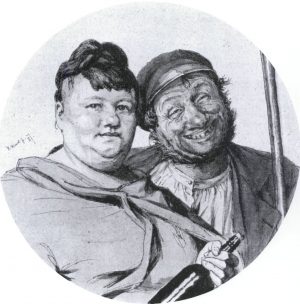
Young Camilla Wergeland took sides in this dispute – her sympathies lay with the Welhaven faction. She shared their Heiberg-inspired respect for form and admiration of Heine. Furthermore, she sympathised with the cultural critique represented by this milieu – she, too, had a distaste for Norwegian parochialism. In addition, the men in this circle were far closer to her ideal of manhood than was her brother Henrik. The ultimate ideal was Welhaven, with whom she fell in love; but he finally settled for offering her platonic friendship – one reason being that she was Henrik Wergeland’s sister.
Born into one milieu, but with sympathies for another, Camilla Collett was the object of mistrust from both sides. This position in open territory contributed to the development of an egocentric hypersensitivity to her surroundings, and it also triggered a need for critical self-clarification. We see the result in her diaries and in her intensive correspondence with her friend Emilie Diriks. Here, she works out her emotional life, examines her opinions about the current topic of debate, complains about loneliness in Eidsvoll and the limitations to which she is subjected as a woman; she discusses literature – she is, for example, fascinated by George Sand and Rahel Varnhagen, familiar with the work of Harriet Martineau, and reads Fredrika Bremer and Thomasine Gyllembourg, but she also had her Bulwer Lytton craze. All in all, she here embarked on the process of self-education and cultivation that would later result in the writer and feminist Camilla Collett.
“There are certain words the thought of which causes my heart to throb – Steamboat – Rhine – Berlin – Strauss – Tour – Cour – Smile – Love – Spring – Life – to live, to live!” writes Camilla Collett in a letter to Emilie Diriks, April 1838.
This process of self-education really took off during her ten-year marriage with Peter Jonas Collett. Peter Jonas Collett was also part of the ‘Intelligence’ circle – and he was the man who articulated with greatest clarity the principles for a poetic realism on Norwegian soil. The writer’s vocation is:
“[…] to perceive life in all its truth and […] to let the soul that is found therein, but which lies hidden from our gaze, stand forth and be seen.”
He should also be remembered for helping to adopt the 1847 act that ensured daughters the same right of inheritance as sons.
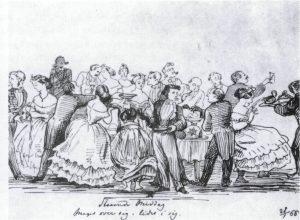
Camilla Collett bore four children during her marriage – a marriage that also proved to be a fruitful period for her artistically. Her husband was extremely busy with his duties teaching at the university, and he drew on Camilla as a source of information about modern literature. She read and retold for him, and then they discussed what she had read. Together they wrote serials for the ‘Intelligence’ journal Den Constitutionelle (The Constitutional). One of their articles, published in 1842, was a harsh (anonymous) critique of Thomasine Gyllembourg’s Nær og Fjern (1841; Near and Far) which, they thought, was the manifestation of a certain “fatigue” in her writing. The author has become a “narrow-minded bourgeoise”. There is something “self-righteous, something stolid” about the book. The one-sided, “hidebound” predilection for a certain type of woman – the gentle, tepid, passive woman, equipped with all the “regulation virtues” – also comes under attack:
“The heroines resemble a beautiful, clear reflection, but, reflected back from another mirror, they are reproduced in an unending succession of which each image becomes weaker, until it all fades into a spot, a nothing.”
This statement is interesting on several counts. It takes the idealistic aesthetic of the times at its word and demands that female literary characters should also be individualised. A line can be traced from this demand and on to the older Camilla Collett’s feminist literary criticism in Fra de Stummes Leir (1877; From the Camp of the Mute). Furthermore, the criticism demonstrates Camilla Collett’s steadily growing aversion to all petit bourgeois smugness.
Peter Jonas Collett encouraged her to write and publish independently too – serials and short stories. He also procured translation jobs for her, and made sure she was paid for the work. It might well be true, as she claimed in her letter to Christian Winther, that at no point did he think she should write a novel – perhaps he did not realise how talented she was. But the consensus of all Collett scholars, headed by Ellisiv Steen, is that he was of major importance to her writing. Through collaboration with Peter Jonas Collett, she learned to convert depression and melancholy, to which she was predisposed following her experiences in the 1830s, into creative intellectual and artistic work.
At the same time, she became aware of her personal approach. The couple by no means always shared identical aesthetic points of view. What is more, Camilla Collett was conscious of women’s right to independent thought, an opinion that had originally been alien to her husband. When Peter Jonas Collett died in 1851, she was ready to step up to a serious writing career. She declined the offer of financial support from her husband’s family, disbanded her home, placed two of her sons in the care of her brothers-in-law, and embarked on a long widowhood spent here and there in a variety of rooms in Copenhagen and Christiania, and from 1863 restlessly wandering between several European cities. She was poor, lonely, indignant, and often depressed, but – like the tin soldier – she was also steadfast in adversity.
Female Love
With Amtmandens Døttre Camilla Collett has given the readers of her day and those of the future a picture of what she called, in the preface to the third edition of the novel, the “story of the female heart”. The central character in the novel is Sofie; when we are introduced to her she is a reckless little girl exploring her surroundings, and we follow her path until she resigns herself to life as a pastor’s wife, having married a man many years her senior.
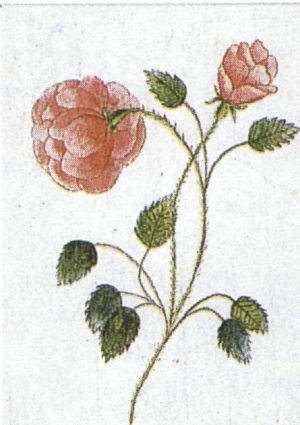
This is, to Camilla Collett’s mind, a typical story. None of the women in the novel are allowed to enter into the love marriage that their author considered to be the prerequisite for a good family life. Sofie’s sister gets the man she wants, it is true, but their relationship rests on “hot-house emotions” – sentimental illusions and the compulsion to commit your emotions to the man available – and the text exposes the couple to mockery and scorn.
The women’s defeat is attributed to several circumstances. Most brutal of all is the necessity of being provided for. This means that the surrounding world ignores, manipulates, or crushes the woman’s feelings for the man. But the novel also shows how the woman’s self-esteem is undermined in such a way that she is not able to assert her own wishes and needs. Instead, she resigns herself to her suffering and her silence. She submits to what, in the third edition of the novel, Camilla Collett called “the self-deadening and self-tormenting law of womanhood”. Loss of self and loss of love are two sides of the same coin.
Amtmandens Døttre was seen as a petition that women should have the possibility to choose their husbands. Or, rather, that neither man nor woman should have the possibility to choose: that privilege should be reserved for “the female love”. Camilla Collett’s argument is partly pragmatic: given that the woman is dispatched to the family sphere and is the one to carry the burdens of everyday life, she is obliged to love the man she is going to work for, otherwise it would all be too onerous and trite. At the same time, however, her standpoint shows how female writers of her era put the view of women promoted by Romanticism on the offensive: only a woman who loves is capable of giving family life its mandatory substance and beauty. And: when a woman really loves, her emotions should be inviolable. Of course, unlike Mathilde Fibiger, Camilla Collett did not let God legitimise woman’s love – Camilla Collett was never pious – but her message is the same: woman’s (the highly-cultivated woman’s) feelings are sacred.
“The central flaw in the book is a far too one-sided view of life’s drawbacks, and not even that view produces a higher trust in an understanding that it is yet – which naturally cannot be contradicted – good that it is as it is,” according to a review of Amtmandens Døttre in Christiania-Posten (1855; Christiania Post).
Goodbye to Fiction
There are natures so pure and simple that they almost go unspoilt through the brief period they spend on Earth, claims Camilla Collett in her memoirs, I de lange Nætter (1863; In the Long Nights). But there are also:
“[…] just as pure, but bigger, more forceful natures, destined to live and suffer endlessly. Their progress through the world is like that of the brook, which has the dirty earth as its bed, but becomes clearer and clearer with its flowing.”
There is little doubt that Camilla Collett intended this statement to be a characterisation of her own nature. But the assertion can also be read as a parting shot from the writer Camilla Collett, a warning that the “dirt” she saw “clearer and clearer” demanded a more lucid language than the one that could be induced from the novels of the day.
These words speak indirectly of her definitive departure from poetic realism as literary norm. This is apparent if we compare her simile with the conventional ways of referring to literature at the time. It is, for example, tempting to read the assertion as a rejoinder to Fredrika Bremer’s comparison between the brook and the realistic everyday story in Famillen H*** (1830; Eng. tr. The Colonel’s Family). Like the brook, the “picture of reality” must reproduce everything which is reflected in its waves and yet let the bed of the brook show through, claims the narrator, Beata Vardagslag. The writer’s task is to play the role of the sunbeam, which “[…] without changing the peculiarity of an object, yet gives to all hues a more lively brightness, lets the sparkling of the waves become more diamond-like, and lights up with a purer brilliancy even the sandy bed of the brook”.
Camilla Collett’s ‘revision’ of Bremer is instructive. It is no longer the case of a writer who makes reality more lustrous and colourful. And the brook’s sandy bed is exchanged for the dirty earth bed, with which the brook is inextricably linked, and which it reveals with increasing clarity.
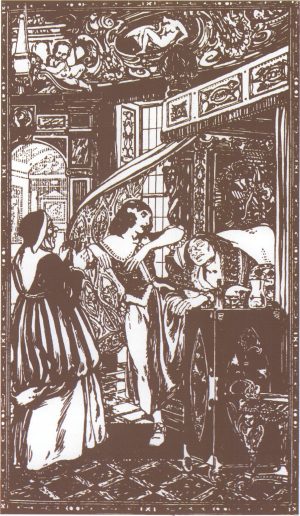
In a way, this image anticipates a development in Camilla Collett’s own work. After Amtmandens Døttre and a volume of Fortællinger (1861; Short Stories), she no longer wrote fiction. Instead, she used the 1860s to explore the grey area between autobiography, memoirs, and travel writing. The result is seen in the fine work from life, I de lange Nætter, and in her first collection of more essay-like texts, Sidste Blade (1868; Last Leaves). She then took the plunge and concentrated on polemical writings, publishing two new volumes of Sidste Blade in 1872 and 1873, and in 1877 the collection that was to be her breakthrough as feminist cultural critic, Fra de Stummes Leir. In the latter she analysed images of women in nineteenth-century novels.
In her review of J. P. Jacobsen’s Fru Marie Grubbe (1876; Mrs Marie Grubbe), Camilla Collett proclaims Marie Grubbe the woman of the future, “of the near futures, of the transition, the woman finally shaken to consciousness of herself and her position”. Marie Grubbe is the woman who might indeed suffer and tolerate, but her “well of patience” has started to leak. She can be bitter and disconsolate, but there “is no sinking into self-deadening resignation”, which is actually rooted in “lack of self-esteem”.
Her writing career drew to a close with two new collections of essays, Mod Strømmen (1879 and 1885; Against the Current), and a number of one-off articles on a range of subjects. She grew “clearer and clearer” – in terms of content, by steadily making it more apparent that she was the spokeswoman for women’s concerns; in terms of form, by virtue of a reduced use of figurative language. She never became a dispassionate and ‘dry’ prose writer, it is true; she developed a highly personal style – she laments and wails, uses polemic and irony, is witty and wistfully cheerful, often self-contradictory, occasionally nostalgic and then – abruptly – fresh and frank, as she is when lashing out at formal social balls, suggesting that young women and men would be better served by going for long hikes together in the mountains. Up there they can enjoy one another’s company informally, without being subjected to “the maternal Argus-eyes of social regulation”: “No polka! Up into the mountains, to the mountains! Silence, you prudes!”
As feminist cultural critic, Camilla Collett still retained her ties to Romanticism. Throughout her life, she insisted on the importance of “the heart”; she fought for the woman’s personal life and demanded respect for the difference:
“Feminists […] do not call for the same upbringing as the man; but they call for the same degree of education for her abilities as the man enjoys for his.”
Ties to Romanticism did not, however, blur her eye for the “dirty” earth. As early as 1872, she was clear and direct in her charges against all sexual double standards, and in 1885 she spoke openly about prostitution and demanded that women did not sidestep knowledge of its existence. Her contemporaries and posterity have ascribed her many negative characteristics: she was distrustful, self-centred, forgetful, difficult, impractical, ungrateful, and dissatisfied. Her merits as wife were thrown into question, later she was accused of being a bad mother – indeed, Georg Brandes even thought that she was one of the causes of Strindberg’s enmity towards women – but prudish is not a label that can be attached to the old Camilla Collett. She must be given a large measure of credit for the strong feminist influence exercised on the Norwegian Modern Breakthrough, and she contributed to avoidance of the deep divide between the female and male outlook on sexual morality that marked Danish cultural life in the 1880s. Towards the end of her life, she received the recognition she had so long awaited – from the women’s movement of the 1880s and also from the male writers of the Norwegian Modern Breakthrough: “[I] do not think I have ever depicted any female circumstance without asking myself: What would Mrs Collett say about it,” wrote Alexander Kielland in a letter to Mrs Collett herself.
Translated by Gaye Kynoch

